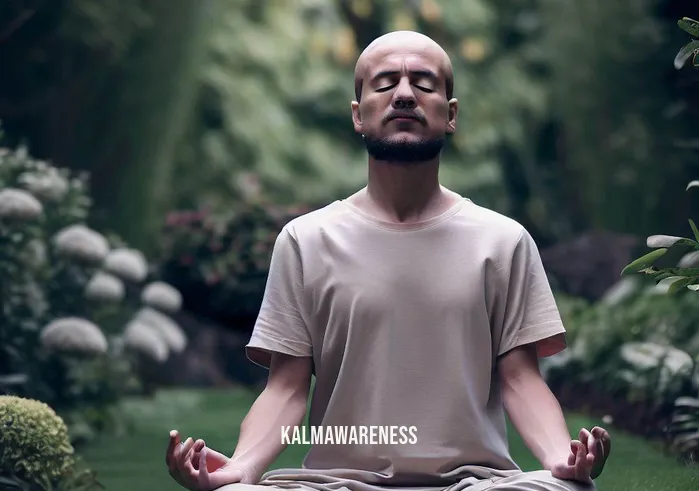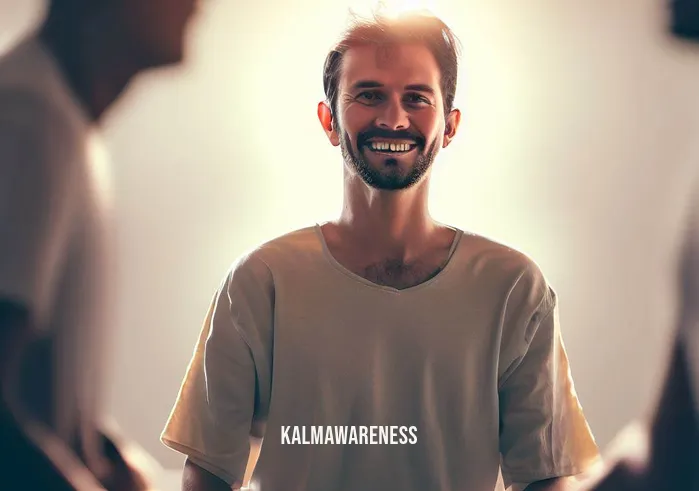Unveiling the Mysteries of Dhammakaya Meditation: A Pathway to Inner Calmness and Self-Realization
Meditation, a practice as ancient as human civilization itself, has been a cornerstone for personal growth, emotional balance, and spiritual enlightenment. Whether you are a novice who finds solace in the always comfortable techniques of basic meditation or an adept practitioner exploring chakra awakening meditation, you may find an unexplored treasure in dhammakaya meditation. This specific form of Thai meditation not only promises a serene mind but also delves into the realms of self-realization and higher spiritual understanding.
What is Dhammakaya Meditation?
At its core, dhammakaya meditation is a Thai Buddhist meditation technique that aims to provide a pathway towards enlightenment and nirvana. This ancient method focuses on the concept of “dhammakaya,” which can be translated as the “body of enlightenment.” Unlike other meditation techniques, which can vary from being broadly focused as taught by Diana Winston or as a method to explore channeling your higher self, dhammakaya meditation offers a more structured approach.
The Central Philosophy
In dhammakaya meditation, you are guided to focus your awareness on the center of your body, visualizing a crystal ball or a point of light within. This focus is believed to harmonize the mind, body, and soul, thus clearing a path for a deeper, more profound connection with one’s true self.
“The essence of dhammakaya meditation is not only to find peace but also to awaken to the truths of existence.”
Why Choose Dhammakaya?
Inner Calmness
One of the most profound benefits of dhammakaya meditation is the experience of inner calmness. As many techniques discuss taming the mind, dhammakaya presents a step-by-step, systematic process to reduce the mental chatter and create a peaceful sanctuary within. It is an enriching experience that fosters emotional stability and mental clarity.
Self-Realization
Dhammakaya meditation is not just a method for relaxation or stress reduction; it also provides tools for introspection and self-exploration. The practice’s focus on the “dhammakaya” or the “body of enlightenment” makes it a potent method for personal growth and self-realization. It is as if you’re going on an inward journey to explore the deeper realms of consciousness, reaching a state similar to the teachings of Bentinho Massaro in Boulder.
Breathing and Meditation
Breathing exercises are a pivotal part of the dhammakaya method. As we often overlook the power of breath in everyday life, understanding its transformative potential within this framework can be enlightening. The breathing techniques in dhammakaya meditation are designed to help practitioners attain a peaceful mind, akin to the philosophy proposed by Bentinho Massaro in his live sessions.
Transcending the Physical and Mental
Dhammakaya meditation makes you ponder upon the philosophical concept: “I am not the body, I am not even the mind”. By internalizing this idea, you can ascend beyond the limitations of the physical world, stepping into a realm of spiritual awareness.
Embarking on the journey through dhammakaya meditation is akin to unlocking a treasure trove of spiritual wisdom, inner peace, and self-realization. Whether you are a beginner or an experienced meditator, this age-old practice has something to offer that can amplify your understanding of self and the universe. Eager to dive deeper into the intricacies and methods of this enlightening practice? Continue reading as we explore how to start your journey in dhammakaya meditation and what sets it apart from other meditation techniques.

Exploring the Techniques and Benefits: A Comprehensive Guide to Dhammakaya Meditation
After laying the foundational understanding of what dhammakaya meditation is and what it aims to achieve, let’s delve into the nitty-gritty—techniques, benefits, and the experience you can expect as a practitioner. As an approach distinct from other forms, such as Diana Winston’s meditation or channeling your higher self, dhammakaya meditation offers its unique blend of exercises and philosophies.
Techniques in Dhammakaya Meditation
Seated Posture and Positioning
While some meditation techniques are versatile enough to practice anywhere, dhammakaya meditation recommends a specific seated posture. The aim is to create a stable physical base for the mind to attain stillness.
Focused Breathing
As mentioned earlier, breathing exercises are integral to the practice. Dhammakaya meditation employs specific breathing techniques that synchronize with mental focus. Unlike other methods that may advocate free-flowing thoughts, the structure here is more rigid but equally liberating.
Visualization
Visualizing a point of light or a crystal sphere at the center of your body helps to concentrate the mind. This is a crucial part of the practice and serves as the pathway to higher levels of self-realization.
Why Dhammakaya Meditation Stands Apart
To help you understand why this practice is unique, let’s look at a comparative table that sets it apart from other techniques.
| Technique | Dhammakaya Meditation | General Mindfulness | Chakra Awakening Meditation |
|---|---|---|---|
| Primary Focus | Center of the Body | Present Moment | Individual Chakras |
| Structure | Highly Structured | Flexible | Structured |
| Aim | Enlightenment | Mindfulness | Energy Balancing |
| Inclusion of Breath Work | Integral | Optional | Included |
| Cultural Roots | Thai Buddhism | Secular | Various Eastern Traditions |
Dhammakaya Meditation and the Importance of Structure
Consistency: The structured approach of dhammakaya meditation ensures a consistent practice, something that taming the mind often requires.
Higher Levels of Concentration: The focused nature of dhammakaya techniques can lead to greater levels of mental concentration compared to more flexible methods.
Gateway to Advanced Practices: The structured methodology serves as a training ground for more advanced spiritual practices, quite unlike the moment-to-moment awareness that techniques like Diana Winston’s meditation focus on.
Achieving More Than Just Inner Calm
While inner tranquility is one of the rewards, dhammakaya meditation also works as a transformative exercise for the soul. It tackles the existential questions that haunt us, like understanding the depth behind the statement, “I am not the body, I am not even the mind”. This aids in transcending the physical and mental limitations, providing a gateway to higher spiritual states.
Preparing for Advanced Practices
If you have ever listened to Bentinho Massaro’s live teachings, you’ll realize that the path to higher spiritual realms requires systematic preparation. Dhammakaya meditation could be that groundwork for you.
Intrigued by how dhammakaya meditation can be your bridge to not just inner calmness but also self-realization and spiritual enlightenment? Just as one moves from basic practices to more complex ones like chakra awakening meditation, dhammakaya serves as both a starting point and a continual path for the seeker. Continue reading as we unveil how to integrate dhammakaya meditation into your daily life and explore its transformative impact on well-being.

Illuminating the Path: How Dhammakaya Meditation Inspires Hope and Transformation
As we deepen our understanding of dhammakaya meditation, one cannot overlook its ability to instill hope, inspire transformation, and serve as a cornerstone for lasting change. In a world riddled with stress and uncertainty, the sanctity of this practice offers a glimmer of light in the murky corridors of life. It stands distinctively in the realm of meditation, offering more than just techniques for calming the mind or balancing energy as with chakra awakening meditation.
A Beacon of Hope in Turbulent Times
As we delve into this Thai Buddhist meditation technique, it’s essential to acknowledge that this isn’t just a means to inner calm or mindfulness. It’s a spiritual journey that brings forth a radiant sense of hope and possibility.
“In a world filled with chaos, dhammakaya meditation serves as the calm after the storm, radiating hope in each mindful breath.”
This insight is aligned with the principles shared by spiritual teachers like Bentinho Massaro, where the pursuit of higher states of consciousness grants us the courage to face life’s adversities.
Words of Wisdom: Quotes to Illuminate Your Dhammakaya Practice
Let’s consider some quotes that resonate deeply with the core principles of dhammakaya meditation and provide us with much-needed inspiration.
“A journey of a thousand miles begins with a single step, and in dhammakaya meditation, that step is taken inward.”
“In the stillness of dhammakaya, we find the movement of the soul.”
“When the outer world weighs you down, let the inner light of dhammakaya elevate you.”
“Each quote serves as a testament to the transformative power of dhammakaya meditation, reminding us that hope and inspiration can be found in the sanctity of stillness.”
The Transformational Impact: From Doubt to Certainty
One of the compelling aspects of dhammakaya meditation is its ability to propel us from a state of uncertainty to one of spiritual clarity. This transformative potential adds another layer to what we know about taming the mind, taking it a notch higher by integrating spiritual awakening.
“Dhammakaya meditation isn’t merely about self-improvement; it’s about self-discovery.”
Reinventing Self: The Ultimate Goal
Self-reinvention is often a term associated with life-altering changes, but within the framework of dhammakaya meditation, it means aligning with your higher self. Understanding that “I am not the body, I am not even the mind” allows you to remove limitations, making space for endless possibilities. This is far more than mere chakra awakening meditation; it is an awakening of the true essence of being.
As we move forward, it becomes clear that dhammakaya meditation offers not just a method but a life philosophy. It holds the keys to hope, inspiration, and a transformation that radiates from within, enveloping our external world in its nurturing embrace. As we’ve come to understand, the journey through dhammakaya meditation can be both an anchor and a sail, grounding us in reality while propelling us toward uncharted spiritual territories.
Are you excited to know how you can incorporate this beautiful form of meditation into your everyday life, making it a habit that continually nourishes your soul? Continue reading as we guide you through practical ways to seamlessly blend dhammakaya meditation into your daily routine.

Unveiling the Layers: A Comprehensive Guide to Dhammakaya Meditation
Now that we’ve journeyed through the inspirational aspects and transformative potential of dhammakaya meditation, it’s time to take a closer look at the nuts and bolts of this ancient Thai practice. In this segment, we’ll break down its various facets and techniques, allowing you to grasp its depths more fully.
A Symphony of Elements
Dhammakaya meditation isn’t a monolithic entity; it comprises various elements that make it unique and powerful. These elements synergize with what Diana Winston calls “mindful awareness”, but bring an additional layer of spiritual depth.
Breathing Technique: The foundation of the practice is concentrated breathing, focusing on the inhalation and exhalation.
Visualizations: Visualization methods in dhammakaya are employed to center the mind, similar to practices in channeling your higher self.
Mantras: The chanting of specific mantras enhances the meditation experience, steering your focus inward.
Sitting Posture: The technique mandates a particular sitting posture that encourages optimum energy flow.
Inner Stillness: Perhaps the most spiritual element is the cultivation of an inner quietude, or ‘inner sanctuary.’
What Sets it Apart?
As you can see, dhammakaya meditation offers a robust framework, unlike some popular meditation styles you may find aimed at being always comfortable. So, what really sets dhammakaya apart?
- Depth of Focus: Dhammakaya demands a much deeper level of concentration.
- Spiritual Goals: The end aim isn’t just mindfulness but self-realization.
- Community Support: Traditionally practiced in a group setting, fostering a sense of spiritual community.
- Holistic Well-being: The practice targets not just the mind, but the body and soul as well.
- Cultural Heritage: Rooted in Thai Buddhist traditions, offering a rich cultural experience.
Practical Applications: Where Can You Use It?
Stress Management: Unlike methods that focus on mere relaxation, dhammakaya offers lasting peace.
Improving Concentration: Given its focus on deep concentration, it is excellent for anyone seeking to improve their attention span.
Spiritual Exploration: If you’re on a quest for self-realization, this practice offers an established path.
Emotional Balance: The emotional stability that comes from dhammakaya techniques is profound, going beyond basic strategies to tame the mind.
Holistic Health: Given its multi-dimensional approach, it can improve both your mental and physical health.
A Step-by-Step Guide to a Basic Session
For those eager to start, let’s break down a typical session:
- Position: Sit cross-legged, hands placed gently on your lap.
- Eyes: Close your eyes gently.
- Breathing: Focus on your breath as you inhale and exhale through the nose.
- Mantras: Introduce a simple mantra to your breathing if you wish.
- Visualization: Visualize a radiant sphere of light at the center of your body.
We’ve peeled back the layers, delving into the intricacies of dhammakaya meditation. From its nuanced techniques to its broader applications, it’s evident how this practice can serve as a comprehensive tool for personal development and spiritual enlightenment.
Are you ready for the crescendo? In the next chapter, we’ll explore the ultimate journey you can embark upon through dhammakaya meditation—a transformative odyssey that will not only reshape your understanding of self but will redefine your very essence. Stay tuned for the grand finale.

The Zenith: Elevating Your Experience with Dhammakaya Meditation
As we arrive at the culmination of our enlightening voyage through the world of dhammakaya meditation, it’s fitting to pause and soak in the richness of the experiences and wisdom we’ve gathered. This ancient Thai meditation technique isn’t merely a practice but a profound lifestyle, a tapestry woven with threads of mindfulness, inner calmness, self-realization, and spiritual enlightenment.
The Road Less Traveled
In a world that often encourages us to rush, to compete, and to amass, dhammakaya meditation invites us to slow down and tune in. While contemporary methods like the teachings of Bentinho Massaro or the techniques aimed at chakra awakening offer valuable insights, dhammakaya stands in its own league. Its emphasis on deep concentration and spiritual elevation makes it a beacon for those seeking a more profound sense of inner peace and self-understanding.
The Mosaic of Benefits
Dhammakaya meditation is not a single-faceted gem but a mosaic of multiple benefits:
- Physical Health: It offers a holistic approach to well-being, impacting not just the mind but the body too.
- Mental Clarity: By harnessing the breath and focusing the mind, it brings a sense of order to our thoughts.
- Emotional Balance: In a world that is increasingly overwhelming, dhammakaya helps us remain centered.
- Spiritual Awakening: Above all, it guides us toward the ultimate goal—self-realization.
A Tapestry of Life Lessons
Beyond the obvious, the true beauty of dhammakaya meditation lies in the life lessons it imparts:
- Patience: It teaches us the art of waiting, something that’s increasingly rare in our fast-paced lives.
- Acceptance: It cultivates an acceptance of self and others, much like the philosophy behind “I am not the body, I am not even the mind”.
- Resilience: It fortifies us against the highs and lows of life, offering a form of emotional equilibrium.
Sailing into the Horizon: What’s Next?
If this enlightening journey has left you thirsty for more, don’t worry! We’ve got plenty of avenues for you to explore:
- Dive into our other forms of meditation like Bentinho Massaro Live techniques to compare and perhaps integrate into your own practices.
- Revisit previous chapters to consolidate your understanding and practice of dhammakaya.
A Final Note of Gratitude
As we wrap up this journey, a heartfelt thank you for being part of this enlightening experience. We promise you that our future editions will continue to shine light on unexplored terrains and elevate your understanding of diverse subjects.
An Invitation to Keep Exploring
Thank you for sharing this enlightening expedition with us! Your journey doesn’t have to end here. Continue exploring our magazine for more insights and transformative experiences.
We look forward to lighting up yet another pathway of wisdom for you soon.
In the words of the Buddha, “To enjoy good health, to bring true happiness to one’s family, to bring peace to all, one must first discipline and control one’s own mind.”
May your practice of dhammakaya meditation bring you closer to that ideal. Here’s to a future filled with more wisdom, peace, and enlightenment!



